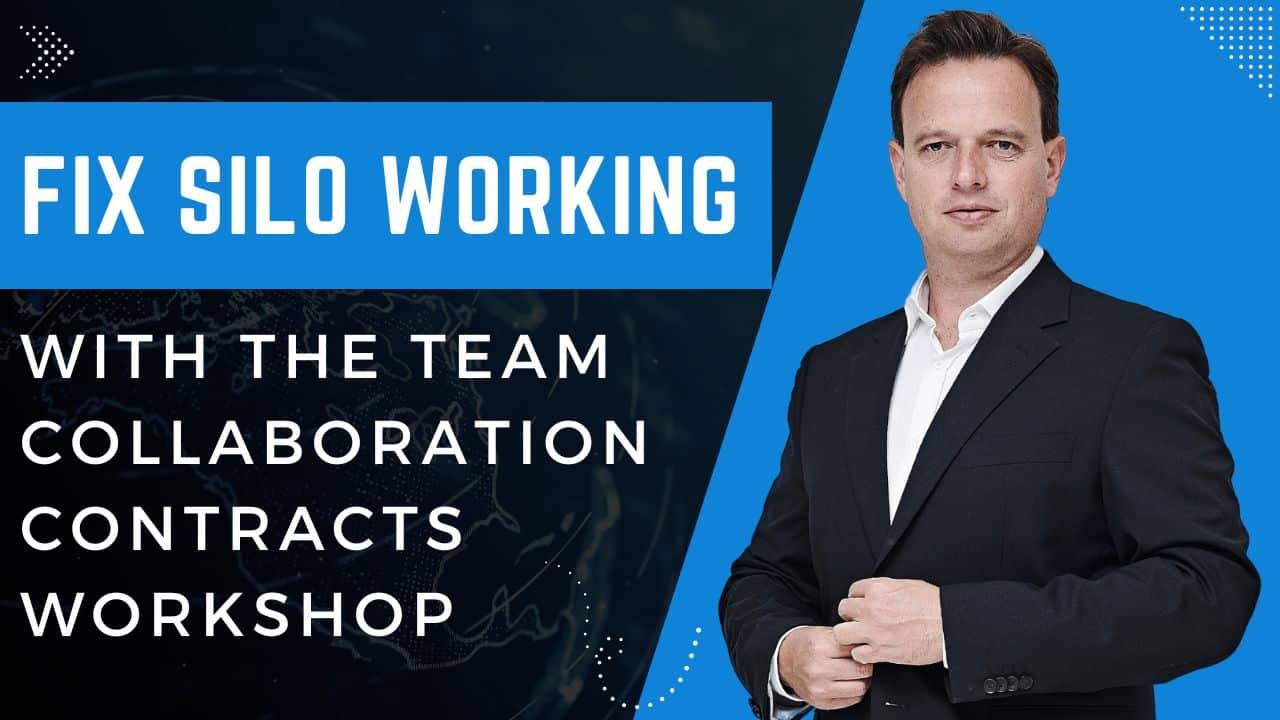A problem I often hear from members is about teams working in their bubbles without sharing information or resources.
In our fast, connected world, working together is important for success.
But sometimes, teams work in isolation, not sharing with others.
When this happens, each team becomes an island.
They only focus on their tasks, missing the big picture and the company's overall goals.
This mindset makes communication, sharing knowledge, and working together difficult.
It results in haphazard communication and no transparency between departments, leading to repeated work and missed chances for teamwork.
Breaking these barriers is important for a better work environment where teams work together to achieve common goals and success for the company.
Most look to solve problems like this with new project management tools, extra training and wishy-washy promises of mindset change.
I use this Team Collaboration Contracts workshop because it’s low-tech, quick to run, and it gets results.
Here's how to run it, step by step:
Objective
To improve collaboration between teams and reduce your working in silos problem.
Process
Preparation
- Draw the Team Collaboration Contracts Matrix on a large piece of paper beforehand and put it on the wall before everyone arrives.
- How many teams are represented in the workshop?
- That’s how many rows and columns your matrix needs.

Step 1 - List key objectives
- Start by explaining the objectives of the process, e.g.
- “We’re looking to improve synergies between our teams and improve collaboration.”
- Each team chooses a letter on the matrix, which gives their team a row and column to work in.
- Each team then identifies a maximum of 3 key objectives for the next 12 months and writes them in the intersecting square (15 mins).

Step 2 - Complete the rows
- Each team now works across their row. They read each team’s key objectives and ask themselves this question:
- “What can our team do to help this team achieve their key objectives?”
- How can they contribute? What can they provide for them?
- Write ideas (one per Post-it) and place them in the intersecting box.

Step 3 - Analyse the columns
- Once the matrix is completed, the teams look down their column and review what each of the other teams has said they can do for them.
- Does it match their understanding?
- Add annotations about gaps, comments, questions, mismatches or duplications.

Step 4 - Form Team Collaboration Contracts
Now for the fun part.
- You set up a speed dating system where you get the teams together in pairs, e.g. A meets B. C meets D. E meets F.
- They get 10 minutes to agree on a final set of Post-it notes in their intersecting boxes.
- The Post-its should be understandable for all and actionable.
- These actions form the Team Collaboration Contract between the two teams.
- After 10 minutes, mix the teams up again, e.g. A meets C. B meets E. D meets F.
- Repeat until all teams have met and formed Team Collaboration Contracts with every team.

Note: If you have an odd number of teams, then in each round, one team sits out and has a break.
In Conclusion
I love this workshop because it puts the onus on the teams themselves to solve the problem of silo working.
Rather than waiting for some magical move from management (that never comes).
Workshops that give power and responsibility to the people on the ground are always more effective than directives from above.
I hope you'll try the Team Collaboration Contracts workshop. It works a treat.
Let me know if you do.
See you soon.

